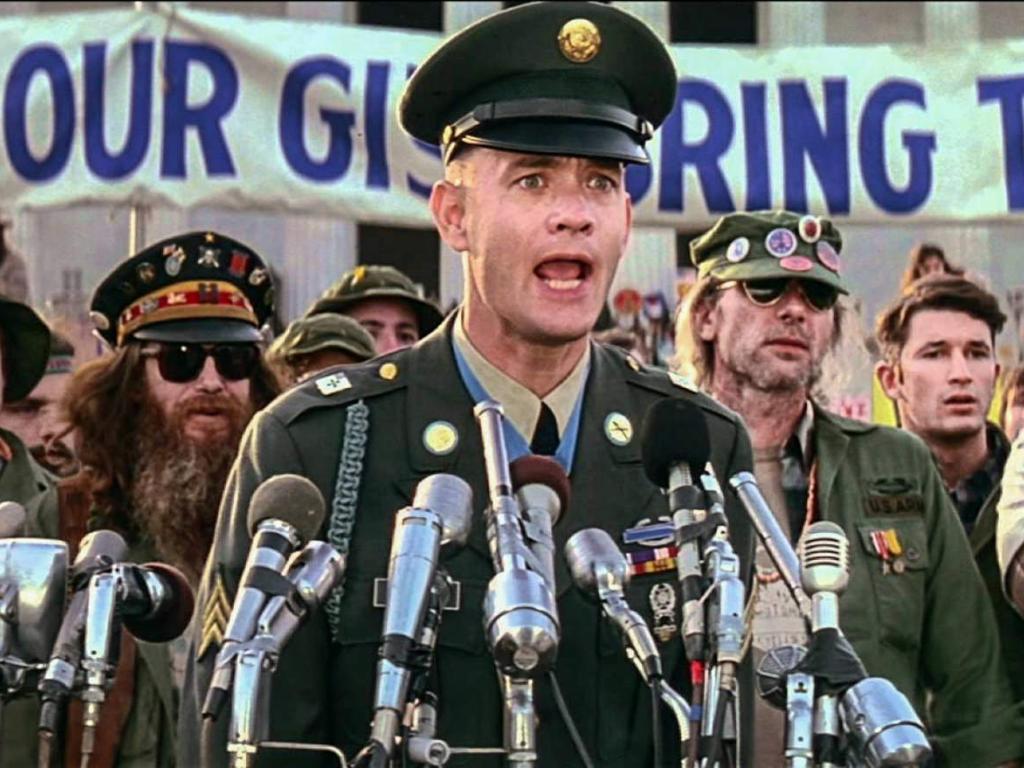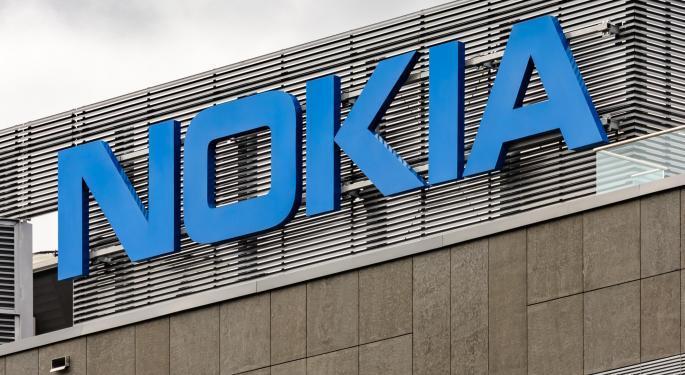At the peak of the financial crisis in September 2008, Berkshire invested $5 billion in preferred stock in Goldman Sachs to provide it with a source of funding when capital markets had become constrained. The preferred stock yielded an annual interest rate of 10% earning Berkshire $500 million in interest income per year. Berkshire also received warrants to purchase 43.5 million shares with a strike price of $115 per share, which were exercisable at any time for a five-year term. Goldman maintained the right to purchase back the preferred stock and in March 2011 exercised this right paying $5.5 billion to Berkshire (the preferred stock could only be purchased back at a 10% premium). The warrants have been exercised and Berkshire holds 3% of the share capital of Goldman Sachs.
While the term "reverse ten-bagger" isn't in common use, it could apply to Chesapeake Energy Corporation. Shares are worth about a tenth of what they were 10 years ago, as your $1,000 would be, had you invested here. Between the financial crisis and then the massive drop in oil prices in late 2014, it really hasn't been a good decade for investors in Oklahoma City-based oil and gas producer Chesapeake Energy Corporation.
Learn which companies have produced impressive growth rates during the past decade. One stock that hasn't delivered for its investors over the last decade has been FedEx. A return of over 10% a year is strong compared to historical averages, but it's a good three percentage points below the performance of the S&P 500 over the same period. So while the delivery business is benefitting from the growth of online retail, FedEx doesn't appear to have been performing well enough to impress the markets.
Fund management typically tries to generate income first, but also capital appreciation, via stocks, real estate-related securities, convertible securities and preferred stocks. At the moment, dividend stocks account for about 51% of assets, convertibles are nearly 22%, real estate investment trusts are 13%, preferreds are another 12%, and the rest is sprinkled into master limited partnerships and cash. On Thursday, Apple shares closed at a new all-time high of $300.35 (on a split-adjusted basis), adding $30 billion to the company's market capitalization of now $1.335 trillion. If you had bought $1,000 worth of Apple shares on January 9, 2007, the day Steve Jobs unveiled the original iPhone at MacWorld 2007, your investment would now be worth $26,103. This article is issued by Cazenove Capital which is part of the Schroder Group and a trading name of Schroder & Co. Limited, 1 London Wall Place, London EC2Y 5AU. Authorised by the Prudential Regulation Authority and regulated by the Financial Conduct Authority and the Prudential Regulation Authority.
Nothing in this document should be deemed to constitute the provision of financial, investment or other professional advice in any way. The value of an investment and the income from it may go down as well as up and investors may not get back the amount originally invested. This document may include forward-looking statements that are based upon our current opinions, expectations and projections.
We undertake no obligation to update or revise any forward-looking statements. Actual results could differ materially from those anticipated in the forward-looking statements. All data contained within this document is sourced from Cazenove Capital unless otherwise stated. Avid long term oriented investor with an interest in value, growth, and special opportunity (spin-offs, insider trading) investing styles.
Strong believer in identifying companies with competitive advantages in order to avoid stock investment losses. An engineer by education, a project director at work, and a writer at home, I am meticulous and apt at both the qualitative and quantitative aspects of investment. Income statements, balance sheets, and cashflow statements are for me a pleasant read. They arefundsthat contain stocks from different companies, but they aretradedlike single stocks on a stock market exchange. They normally try to match the returns of a market index, like the Dow Jones Industrial Average or the S&P 500, by investing in the stocks that are included in that index. In other words, an ETF's performance will normally match the performance of the stock market.
In 2016, Berkshire surprised investors by making large equity investments in the major US airlines. Buffett had previously described airlines as a "deathtrap for investors". Buffett had made an investment in US Airways in 1989 which, although he sold for a profit, almost lost Berkshire a substantial sum of money. In 2017, Berkshire was the largest shareholder in United Airlines and Delta Air Lines and a top 3 shareholder in Southwest Airlines and American Airlines. Buffett himself has described this as a "call on the industry" rather than a choice in an individual company. In April 2020 Berkshire sold all shares in US Airlines in response to the COVID-19 pandemic.
Shares closed over $100,000 for the first time on October 23, 2006. For what it's worth, the legendary investor Warren Buffett is still betting on Apple—despite his general reluctance to invest in technology companies. Buffett said back in May that his holding company, Berkshire Hathaway, has 9.8 million shares of Apple. If that's still the case, several market watchers have pointed out, the recent uptick in Apple's value means Berkshire Hathaway likely made more than $60 million off the investment in a single day last week. Famed investor Peter Lynch famously coined the term "ten-bagger" to refer to a stock that is 10 times more valuable now than when you bought it — playing off the baseball "two-bagger" that refers to a double.
In most cases, you have to invest in a smaller, emerging company to see growth like that, but mega-cap Starbucks is currently a ten-bagger for anyone who bought it a decade ago. "In value style, we have seen that investments made in 1999 did very well because at that point in time markets were largely focused on technology stocks. Similar was the case in 2007 when infrastructure was in focus. Hence, we believe that value investing at a time when market are elevated tends to do well as value focuses on investing in sectors which are out of favour but offer long term potential," said Naren.
You need a margin account in order to sell stocks short, also known as short selling. With this speculative trading strategy, you profit from a decline in a stock's price. Like buying on margin, short selling is a sophisticated strategy for advanced investors. The potential for investments that have been bought on credit to lose value is the biggest risk of buying on margin. While a margin account can amplify your gains, it can also magnify your losses.
Having to liquidate stocks during a margin call, because market losses have reduced the value of your investments, makes it very challenging to invest for the long term in a margin account. Early warning symptoms may be monitored during quarterly earnings calls and based on factual news announcements both from the company itself and from interested parties and will help with the timing of an exit strategy if needed. Insurance and reinsurance business activities are conducted through approximately 70 domestic and foreign-based insurance companies.
Berkshire's insurance businesses provide insurance and reinsurance of property and casualty risks primarily in the United States. In addition, as a result of the General Re acquisition in December 1998, Berkshire's insurance businesses also includes life, accident, and health reinsurers, as well as internationally based property and casualty reinsurers. Berkshire's insurance companies maintain capital strength at exceptionally high levels. This strength differentiates Berkshire's insurance companies from their competitors.
Collectively, the aggregate statutory surplus of Berkshire's U.S.-based insurers was approximately $48 billion as of December 31, 2004. All of Berkshire's major insurance subsidiaries are rated AAA by Standard & Poor's Corporation, the highest Financial Strength Rating assigned by Standard & Poor's, and are rated A++ by A. M. Best with respect to their financial condition and operating performance. In April that year, private investors rushed to pick up what they hoped were bargains. A whopping £2.6bn was invested in stock market funds, six times more than a typical month, according to data provider Calastone. The last 10 years have been eventful ones for the stock market.
As such, there is no shortage of stocks that have provided an excellent return on investment over the last decade. The stock portfolio is a tight group of fewer than 60 stocks that's most concentrated in information technology, health care and financials, and minimal on energy, real estate and materials. Top holdings include Microsoft, Alphabet, Apple and McDonald's at present.
It also holds nearly 1,100 investment-grade bonds with an average duration of 8.2 years, meaning that a 1-percentage-point increase in rates should cause those bonds to decline by about 8.2%. In down markets, you don't have to sell stocks at a loss if you'd rather take a margin loan and wait for the market to recover (just don't wait too long). When the market is up, margin may help you delay realizing a short-term capital gain, which can trigger high taxes. Taking a margin loan and wait until you're able to benefit from the lower long-term capital gains tax rates.
Ideally, stock prices should rise too, so your capital grows along with your income. But as the data shows, even when the actual price of the index has gone nowhere, you can still earn a return on your investment if you reinvest company dividends. Dollar-cost averaging, a strategy of making regular investments over time, helps ensure you don't pour all your money into the market when prices are high. You can always make future investments into Apple or any other stock over time; there's no need to invest all of your available capital at once. Barring the realization or numerous early warning signs of mentioned or unexpected major risks, investors should accumulate shares of Apple on any market corrections until Tim Cook's retirement from the position of CEO.
At that time, investors should carefully scrutinize the fundamentals of the company. Understanding Apple's competitive advantages and EPS/DCF valuation assumptions are essential building blocks to appreciating Apple's long-term growth strategy. Claims of "the business is too large to grow" show a predilection for the lazy System I as opposed to the thoughtful use of System II any rational investor should pursue. This is because there has never been a stock split in its Class A shares and Buffett stated in a 1984 letter to shareholders that he does not intend to split the stock. The Mosaic Company is a basic materials company that produces concentrated phosphate and potash fertilizers. Of course, in the last decade, Mosaic Company stock has just been producing a lot of disappointed investors as it's worth less than half what it was 10 years ago.
Maybe they could take pictures of everyone who lost money and piece them together into some sort of big collage. As many as 60 out of 205 BSE 500 stocks whose market capitalisation was over Rs 1,000 crore on October 31, 2011, were trading below their book value, which is the value of a company's assets less its liabilities. The list includes 13 stocks from the banking sector, six from the power and distribution sector and four each from telecom, engineering and real estate sectors. Since 2000, when we can get euro returns for the index, Irish investors will have seen their money grow by about 71 per cent. And even the collapse of the market following the financial crisis in 2008 hasn't hit investors too hard over the period since 2005, with returns up by 150 per cent over this period, thanks largely to US markets reaching new highs.
You can also invest in foreign securities by buying mutual funds from foreign fund houses. Just like in case of stock investments, you will have to comply with the rules for mutual fund investors in the destination country. If the money spent on Apple products was invested in the company's shares instead, it would have grown manifold. Since 24 August 2019, Apple shares have more than doubled in value from $212 to $500, a return of 133% in one year. Apple stock has given annualised returns of 32% in the past 10 years.
How Much Would An Investment In Apple Be Worth Today There's no need to slap makeup on results like these, Estee Lauder's annual return over the last decade might have investors blushing at how well they've done. The company grew at a rapid rate after the 2008 crash, and despite several hiccups, it's now trading at its peak. Starbucks investors enjoyed a meteoric rise when the company's stock prices nearly doubled between the summer of 2018 and the summer of 2019. Much of that gain, however, was lost when the COVID-19 crisis struck and things like expensive coffee could no longer be justified by many struggling families. That time, however, is in the past and Starbucks shareholders are now enjoying venti-sized gains.
The Charles Schwab Corporation provides a full range of brokerage, banking and financial advisory services through its operating subsidiaries. Its broker-dealer subsidiary, Charles Schwab & Co., Inc. , offers investment services and products, including Schwab brokerage accounts. Its banking subsidiary, Charles Schwab Bank, SSB , provides deposit and lending services and products.
Access to Electronic Services may be limited or unavailable during periods of peak demand, market volatility, systems upgrade, maintenance, or for other reasons. Standard online $0 commission does not apply to over-the-counter equities, transaction-fee mutual funds, futures, fixed-income investments, or trades placed directly on a foreign exchange or in the Canadian market. Options trades will be subject to the standard $0.65 per-contract fee. Service charges apply for trades placed through a broker ($25) or by automated phone ($5). See theCharles Schwab Pricing Guidefor Individual Investors for full fee and commission schedules. If you had bought just one share of Apple, you would own 56 shares today after the stock splits.
Those shares would be worth $14,896 at the current price of $266 per share. It is worth reiterating that based on P/E, discounted and reverse EPS, and discounted and reverse DCF models, Apple shares are not currently overvalued. Given the amazing Q quarterly results and currently known facts about the business, in a risk-averse scenario and with a margin of safety in mind, an investor can claim that Apple shares are fairly valued.
Once you're out of debt and have a fully funded emergency fund, we recommend investing 15% of your gross income in growth stock mutual funds inside your tax-advantaged retirement accounts like a 401 and Roth IRA. Mutual funds are also actively managed funds, which means a team of investing professionals makes it their mission to pick and choose stocks for the fund with the goal of beating the stock market's average returns. Mutual funds are created when a group of investors pools their money together and buys stocks from dozens of different companies, which gives you a nice level of diversification for your portfolio. But if you're not careful, you could be betting your retirement future on the success of just a handful of companies . See up to five investing pros we trust.We'll spare you the demand curve graphs from Economics 101, but let's talk about pizza.
(Bet you didn't see that coming.) Let's say Papa Dave's Pizza Restaurant is selling pizza by the slice. Dave has a fresh cheese pizza with eight slices, but he has 20 hungry customers. Rather than setting a fixed price, he decides to have a pizza auction and let the customers place bids. As you can imagine, the limited supply and the excess demand will drive up the price per slice. The stock market is like this on a much larger scale with millions of stocks changing hands each day.
In 2010, Buffett claimed that purchasing Berkshire Hathaway was the biggest investment mistake he had ever made, and claimed that it had denied him compounded investment returns of about $200 billion over the subsequent 45 years. Buffett claimed that had he invested that money directly in insurance businesses instead of buying out Berkshire Hathaway , those investments would have paid off several hundredfold. Buffett initially maintained Berkshire's core business of textiles, but by 1967, he was expanding into the insurance industry and other investments.
Berkshire first ventured into the insurance business with the purchase of National Indemnity Company. In 1985, the last textile operations (Hathaway's historic core) were shut down. There's no need to slap makeup on results like these, Estee Lauder's over-25% annual return over the last decade might have investors blushing at how well they've done. The company grew at a rapid rate after the 2008 crash, had one hiccup in 2016, only to roar back in 2017, nearly doubling its value from the start of 2017 to March 2018.
Pfizer comes in just ahead of the S&P 500 over the last decade, so if you had opted to the pharmaceutical giant over an S&P 500 ETF with your $1, years ago you would have an additional $315.27 right now. Accounting for stock splits (there have been three in Apple's history), a lone share of Apple stock purchased in 1980 would today be worth $4,502. If one purchased $1,000 worth of Apple shares 33 years ago, that investment today would be worth $204,000.
If one purchased $1,000 worth of Apple shares in June of 1997, when shares were trading as low as $3.56 a share, that investment would today be worth $632,000. "With a cash account, the investor has the luxury of waiting for a stock to recover in price before selling at a loss," Lach says. That's not the case with margin accounts, meaning you may end up losing money on a stock that would have eventually rebounded.
































No comments:
Post a Comment
Note: Only a member of this blog may post a comment.